Shoulders are a tricky part of the body, anatomically speaking. They are a naturally mobile joint, with many connecting muscles and ligaments that are prone to injury. Pain in the shoulder can be associated with strains, tears and strength imbalances. Fortunately, a few key yoga poses can help build strength and relieve tension in the shoulder muscles, which can add to overall stability and help prevent injury. If the shoulder is already injured (a rotary cuff tear, for example), consult your physician before attempting any yoga postures.
1. Plank
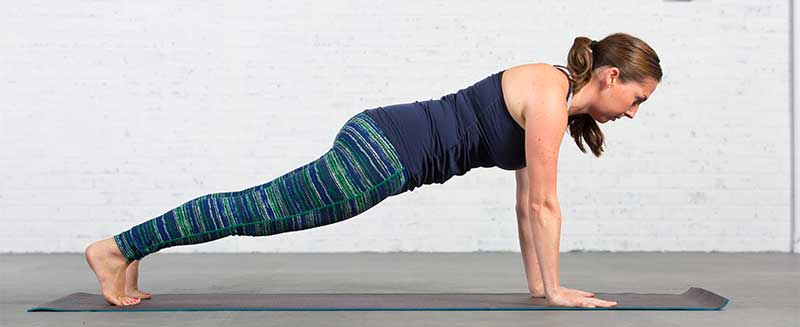
Not only is plank a core strengthening powerhouse, but it also works the shoulders and provides an opportunity to stabilize the shoulder girdle.
Starting from hands and knees, bring your hands directly underneath your shoulders, fingers spread wide. Extend your legs to lift your knees off the ground and engage your core. Draw your shoulder blades down your back, and try to press your chest slightly forward to broaden your upper back. You should feel as if you are pushing the floor away and hugging muscles to bones.
- Option - Side Plank
For an increased shoulder-strengthening move, take plank into side plank by turning to one side and lifting one arm to the sky. Feet can stack, stagger, or you can bring the bottom knee to the ground for support. Continue to press the floor away and work to separate your shoulders.
2. Dolphin
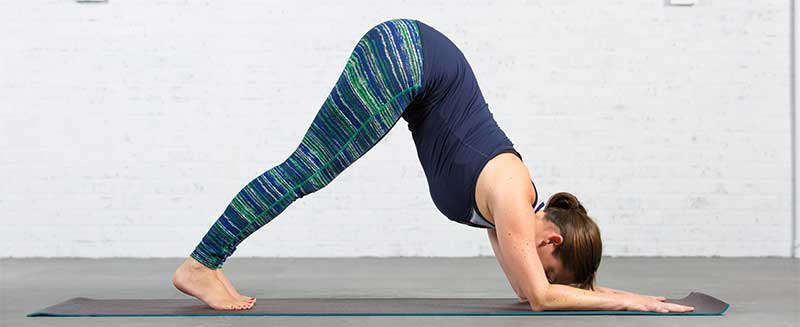
From plank, lower yourself onto your forearms and walk your feet in to lift your hips high (so the body is in an upside down “V” shape). Press firmly into your forearms and send your shoulder blades toward your hips.
- Option - Forearm Plank
From dolphin, walk your feet back out until you are in forearm plank, with your body in one straight line. Use your core to keep you solid, while drawing your shoulders down your back and keeping your elbows stacked under your shoulders.
- Option - Dolphin Pushups
Flow between dolphin and forearm plank, moving slowly, smoothly and with the breath.
3. Warrior 2
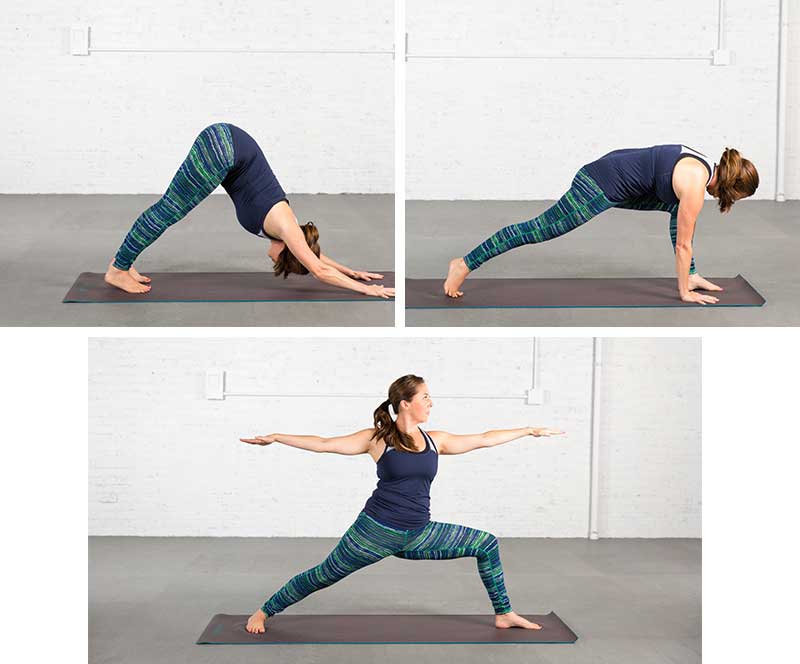
From downward facing dog, step your left foot between your hands, spin your right foot down to a 45-degree angle. Bring your arms into a “T” shape so your fingers are in the same line as your feet. Bend into your left knee, ensuring that the left knee is aligned over the left heel. Stretch through your chest, shoulders and arms. Switch sides.
- Option - Upturned Arms
For a nice shoulder release, flip your palms to face the ceiling, keeping your arms outstretched. Relax your shoulders down and back.
- Option – Chest Opener
Reach your arms behind your back to interlace your fingers and press your palms together. Use a strap if your hands don’t touch. Lift your chest and lengthen your spine as you draw your shoulders down your back, pushing your hands toward the wall behind you. For more intensity, hinge forward, keeping the same arm position.
4. Warrior 1 with Eagle Arms
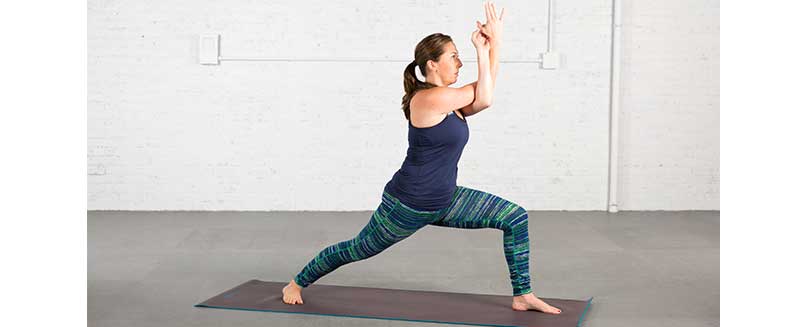
Adding eagle arms to Warrior 1 allows for a nice upper back and shoulder stretch. Come into Warrior 1 with your hips and shoulders squaring toward the front of your mat, bring your left arm under your right so your elbows are stacked and your forearms wrap around each other and palms meet. Float your elbows up and down, moving with your inhales and exhales to work deeper into the shoulders. Switch sides.
- Option - For less intensity, bring opposite hands to shoulders instead of joining palms.
5. Lunge with Cow Face Arms
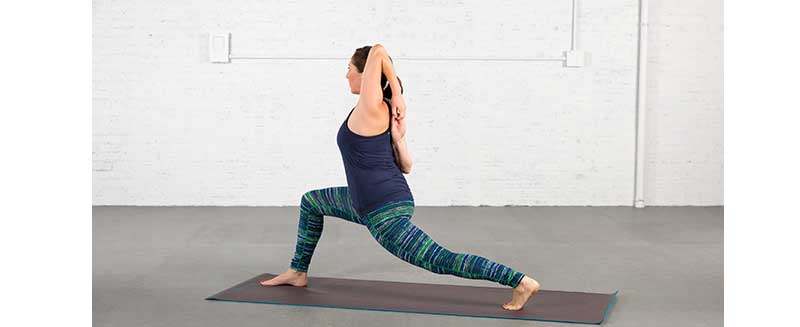
Cow face arms is another upper body position you can add on to other poses to get a good stretch in the rotator cuffs. Standing in a high lunge, bring the left arm up and over the back, so your elbow is facing the ceiling and your hand reaches between your shoulder blades. Reach your right arm around your back so your right hand grasps your left hand. Work to straighten your spine and draw the elbows away from each other. Switch sides.
- Option – Modify by using a strap if your hands do not meet.
You can add this sequence into any yoga or exercise routine to help stretch and strengthen your shoulders. If there is pain during any of the poses, gently come out of them and talk to your doctor before attempting again.




 by
by 






 by
by